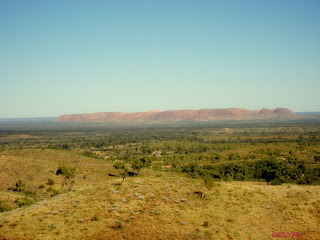Back in my pre-teen years, we rented a house that had a concrete back yard. I'm not sure what possessed the owners to cover the earth with a man-made material, but it sure made yard clean-up easy. There was no drama of who was going to mow the lawn or pull the weeds. Of course, the conquering of mother nature had its downside and her revenge came during high summer when the New Mexican sun raised the back yard temperatures to what could only be comparable to hell. Fortunately, the overwhelming heat could be supressed by dragging out the hose and spraying down the concrete jungle. At the time the water rushing across the sealed ground, down the driveway and into the gutter was a symbol of relief. Today, as I reflect on that image, I can only shake my head in disbelief and wonder how we could have been so wasteful of something so important. It isn't as if we lived in an area with an abundance of water; in fact, we were right smack in the middle of the desert.
Fortunately, by the start of the new millennium we began to respect the world's most precious resource and the local government began to educate its citizens about the necessity of water conservation. In just over a decade the way water is used in the city has drastically changed and water conservation has become an integral part of life. People have become aware of their personal water use. Older toilets and washing machines are being replaced by lower water use models. Areas of large green grass have been replaced with native, drought tolerant vegetation. Sprinklers have been replaced with drip irrigation systems or, where necessary, are only used on specific days during the early morning or late evening.
Of course these changes took time and there are still those that are resistant to change, but as the population continues to be educated about water conservation, the limited resource will receive the respect it deserves.
As I look to the future, I can only hope that my current hometown in Southern Australia will soon begin to educate its population about the necessity of water conservation. It is not uncommon to hear the locals boast about how we live in the driest state in the driest continent. This may be true, but many still want to have lush green lawns, and they want the freedom to use the hose to wash their cars and sidewalks. During the last two summers, the water restrictions that have been imposed--due to low reservoir levels from the current drought--have been met with resistance. If the fact that we live in an area effected by extreme drought is not enough to gain the support of those opposed to enforced water conservation measures, perhaps it is time for the government to turn to educating the population. How else can we are ensure ample water for future generations?
Today October 15th 2010 is Blog Action Day, its theme, water. You can read more about this event here
blogactionday.change.org.




























